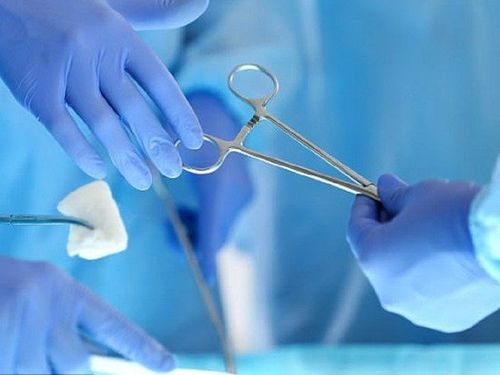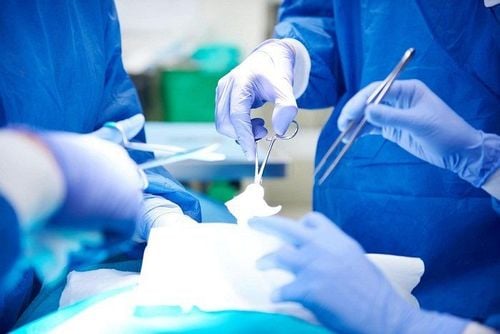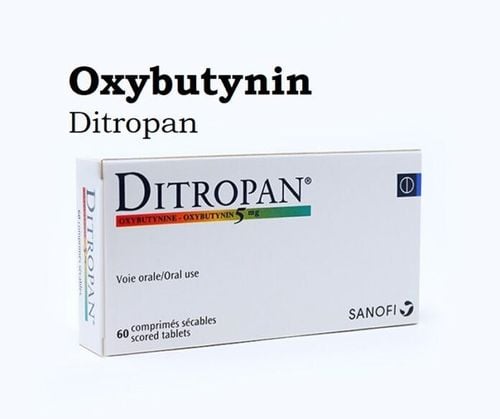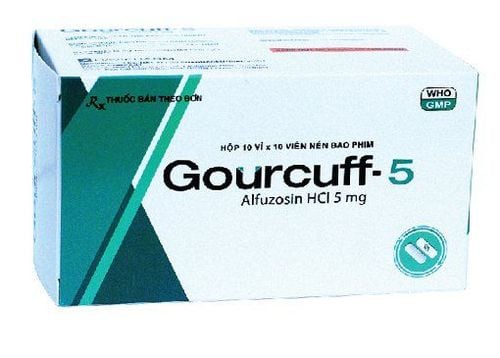This is an automatically translated article.
The article is professionally consulted by Master, Doctor Vo Thien Ngon - Department of General Surgery - Vinmec Da Nang International General Hospital
Most dysfunctional diseases in the urinary system are asymptomatic, silent, difficult to detect, often detected at a late stage, requiring surgical methods to restore urinary function.
1. Plastic surgery of the pyelonephritis - ureter
1.1. Reconstructive surgery of the pyelonephritis - ureteral junction Indications for shaping the pyelonephritis - ureteral junction:Congenital stenosis of the pyelonephritis - ureteral junction, narrowing of the pyelonephritis - ureteral junction due to vascular malformations . Narrowing of the pyelonephritis-ureteral junction due to complications after surgical intervention in the part of the ureter close to the renal pelvis, or in the renal pelvis... 1.2. Y-V pyelonephritis-ureteroscopy is used in cases of moderate narrowing of the pyelonephritis-ureter junction, with minimal dilatation of the renal pelvis still funnel-shaped. Patient position, incision, pyelonephritis-ureteral dissection such as Anderson - Hynes technique. Incision of the pyelonephritis-ureter with a knife in the shape of a Y so that the tail of the letter Y runs along the narrow position of the ureter. Suture the renal pelvis to the ureter: the V-end to the Y-tail, then sew the 2 edges to make a V-shaped suture on the barrel with a JJ sonde or catheter. Check hemostasis, install renal pit drainage, close the incision.
2. Bladder-ureteral plastic surgery

Bringing the ureter to the abdominal wall: is a simple surgery, done quickly, extraperitoneal intervention, however, the disadvantage is that it has to be drained in 2 locations, the rate of narrowing of the ureteral anastomosis is high, and it is difficult to place the ureter. drain... Dissect 2 ureters to cut the ureters so that they have enough length to bring out the abdominal wall. Bring the ureter to the selected position as an anastomosis on the skin, away from the folds, or scars, suture the mouth of the ureter to the superficial fascia under the skin and skin tissue. uretero-ureteral anastomosis with a Y-shape: This anastomosis has the advantage that there is only one mouth connecting the ureter to the skin. Incision of the hypogastrium in the midline or transverse. Open the peritoneum, find both ureters and dissect a long section without damaging the blood vessels supplying the ureter. Both ureters were cut and pulled to the midline, connecting the two Y-shaped ureters, bringing the Y-shaped end to the skin. Ureteral drainage into the colon: Planting 2 ureters and colon has tunnels against reflux, but this technique often has infectious complications (the phenomenon of bacteria reflux from the colon to the kidneys and ureters). . 2.3. Some ureteral replacement surgery In the case of extensive damage to the ureter due to chronic inflammation or trauma, while the kidney function is still good. There are many materials that can be used to replace the ureter, such as: arterial, venous or other materials of the same or heterogeneous.

3. Plastic surgery in bladder, urethra
3.1. Urethral implant surgery Indicated in special cases such as prostate cancer, cervical cancer with invasion of the ureter to observe the bladder... ureter-bladder connection can be done in 3 ways: grow the ureter from outside the bladder, in the bladder or mixed.Straightening of the ureter - bladder outside the bladder: this technique is suitable for lesions in the ureter adjacent to the bladder. Direct implantation of the ureter-bladder along the line on the inside of the bladder. Planting the ureter - bladder by a mixture of both inside and outside the bladder: This technique has the advantage of combining the strengths of the two methods above. 3.2. Plastic surgery to increase bladder capacity Some techniques are being applied such as:
Bladder reconstruction with small bowel or colon: Take a 25-30 cm long ileum or sigmoid colon, open it along the loop of bowel at the free border, then suture the two free edges together, open along the bladder in an anteroposterior direction to close to the bladder neck, suture the loop of bowel upside down into the bladder. Gastric cystoplasty: Take a part of the stomach with the pedicle of the right gastric artery, insert the graft through the mesentery of the colon and the mesentery of the small intestine to connect to the bladder. Ureteral cystoplasty Ureteral cystoplasty is indicated for cases of parietal bladder with dilated ureters. The technique can be performed transperitoneally or extraperitoneally.
Laparotomy above and below umbilicus, revealing dilated ureter, bisection of ureter, upper end connected to contralateral ureter end-to-side, opening along the lower end of the ureter to the bladder, opening along the bladder From the orifice of the ureter, it loops anteriorly to the bladder neck, sutures the ureter to the bladder.
3.3. Urethral plastic surgery Treatment of urethral stricture has 2 methods: laparoscopic surgery and open surgery. Usually when treating urethral stricture, simple methods such as endoscopy are used first, if these methods fail, open surgery is required.
Endoscopic urethral shaping method is indicated in the following cases:
Short urethral stenosis that can be dilated. Bladder neck stenosis, especially stenosis after endoscopic prostatectomy. After narrowing after open surgery, the guide can still be placed. Not indicated in the following cases:
Acute urinary tract infection, abscess around the urethra. Narrowing associated with urethral fistula. Long narrow and completely narrow. For diseases of the urinary system, you need urodynamic imaging, blood and urine test results. At the same time, you should go for regular check-ups according to the stage of treatment and the response of the disease. To restore bladder function effectively you can follow the above methods.
Doctor Vo Thien Ngon has over 7 years of experience working as a urologist and surgeon at Hospitals: Hue Central Hospital, Hue University of Medicine and Pharmacy Hospital, Tam Tri Da Nang General Hospital .
Doctor Ngon with the ability to specialize in the field of examination and treatment of diseases of the Urology and Andrology system, Urology surgery, endoscopic urological surgery, Laparo urinary tract surgery, endoscopy Urinary. Currently, Dr. Vo Thien Ngon is a Urology - Orthopedic Surgery Doctor, Department of General Surgery, Vinmec Da Nang International Hospital
Please dial HOTLINE for more information or register for an appointment HERE. Download MyVinmec app to make appointments faster and to manage your bookings easily.














